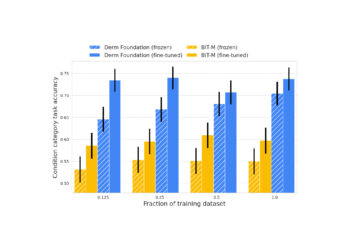In 2023 Mathias Schrøder was stressed, burned out, and perplexed. He had scaled revenue on his Denmark-based clothing company, but bloated overhead meant little profits and even less free time.
“I felt lost, unable to fix our predicament,” he told me, “until I realized I was trying to solve the wrong problem.”
His solution was to scale down. He fired employees, lowered warehouse costs, and eliminated stagnant inventory. The result was 60% less revenue and 25% more profit.
He shared his journey in our recent conversation. The entire audio is embedded below. The transcript is condensed and edited for clarity.
Eric Bandholz: Who are you, and what do you do?
Mathias Schrøder: I’ve been in ecommerce for about seven or eight years, working for Patina, my family’s clothing business, and as a consultant and developer. Before that, I had a short stint in finance as an analyst for an investment firm. I quickly realized that wasn’t for me — wearing a suit and tie and following orders.
One thing led to another, and in 2018, I joined my parents’ business, selling clothing for women 65 years and older. Back then, we were doing tiny numbers, around $300 to $400 a month. Fast forward to now, we operate online and in physical locations in Denmark, Sweden, and Germany, generating around $3 to $4 million annually.
We recently decided to lower our revenue to gain more freedom. The original concept was to load clothing into large vans, drive to retirement homes or other places where seniors gather, put on small fashion shows, and sell the clothes afterward. We still do that but are now focused on scaling back to have more control over our time.
Bandholz: What led you to that choice?
Schrøder: The decision started several years ago when my girlfriend and I vacationed in Thailand. I love running a business but realized there’s more to life. Plus, I was stressed, burned out, and not hitting the numbers we needed.
We had bloated budgets, excess inventory, too many employees, and a too-large warehouse. I felt lost, unable to fix our predicament until I realized I was trying to solve the wrong problem.
So I said to my girlfriend, “I have this crazy idea. What if we just fire everyone? Why do we keep trying to run faster?” I crunched the numbers in Google Sheets. I started deleting salaries, deleting warehouse costs, deleting X, Y, and Z. I quickly realized that we could decrease revenue without hurting profits.
That was the start of the journey. And it worked.
Implementing the changes took some time. In Denmark, we can’t just fire people, for example. By November 2024 we had completed most of the reductions. Our revenue that month was roughly $800,000, down from $2 million in November 2023 — less than half. But profits increased by 25%!
We killed 60% of the revenue and made a lot more money. It’s a lesson for all entrepreneurs. We should all take an honest look in the mirror and ask, “Why are we doing this?“
I have more time to work on projects I enjoy. For example, I’m launching an analytics app for Shopify stores called Kleio, inspired by the Greek muse of history, to help others manage their data at a much more affordable price. It’s a passion project, and I’m excited to share it with merchants who want a better understanding of their numbers.
Bandholz: Where can people follow you?
Schrøder: Our ecommerce site is PatinaMode.dk. It’s in Danish, and we cannot ship to the U.S., unfortunately. The analytics app is at GetKleio.com. I’m on X and LinkedIn.






